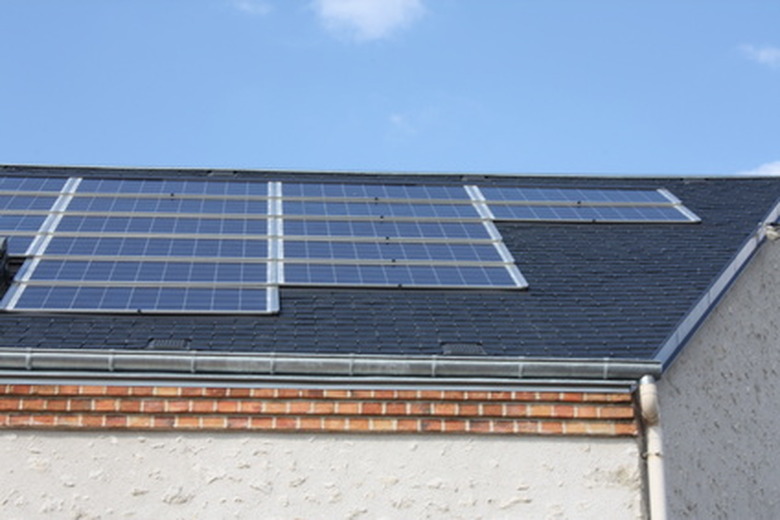How To Wire A Solar Panel To A Battery To An Inverter
Things Needed
-
Solar panels
-
DC wire
-
Charge controller
-
Battery cables
-
Deep cycle batteries
-
Inverter
A solar panel uses the photoelectric effect to convert the sun's energy to electricity. This electricity is generated at a voltage characteristic of the panel and is transmitted as direct current to a battery bank, where it charges the batteries. From there, it must be converted to household AC current to be useful, and that is the job of the inverter. One extra component is needed in a solar system, and that is a charge controller between the panel and the batteries to protect them from overcharging.
Step 1
Connect the panels of a solar bank together, if there are more than one. They are usually wired in parallel to preserve the voltage of each panel, but you can also wire sets of them together in series to increase the voltage to conform to the voltage of the battery bank, if need be. The output voltage from the panels should be the same as the voltage of the battery bank.
Step 2
Connect the outgoing leads from the panels to a charge controller. Calculate the wire size you need for this from a determination of the output current and the length of wire you need, keeping in mind the charge controller should be located near the batteries. DC wire with gauges from 16 to 10 are typical for this.
Step 3
Use battery cables to connect the batteries in the bank together in a combination of series and parallel to optimize the capacity of the bank and maintain the same voltage as the panels. Connect two batteries in series by connecting the positive terminal of one to the negative terminal of the other to double the voltage of the combination. Connect them in parallel by connecting their positive terminals and their negative terminals to maintain the voltage, but double the capacity.
Step 4
Connect the charge controller to the battery bank with battery cables. A good charge controller will average the voltage fluctuations of the panels and output a steady charging voltage to the batteries. It will also protect the batteries from overcharging as well as protect the panels from current back flow from the batteries.
Step 5
Connect the battery bank to the input lugs of the inverter, and then connect the inverter to the house panel. The inverter will convert the DC current from the batteries to 110 volt AC current for use in the house. If the house panel is connected to the power grid, the inverter can be programmed to sell excess power back to the power company.
Tip
Store the batteries in a cool, well ventilated location and connect them together with battery cables of the same length. The batteries are the heart of the solar energy system and are sensitive, so maintain them regularly.
Use a load center to help organize larger solar energy systems. This is similar to a house service panel, with input and output receptacles for all components of the system.
Warning
A fully-charged battery bank should be treated with the same care as you treat live wires connected to the power grid. Make all connections that you can before you hook up the batteries.
